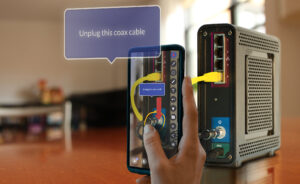The landscape of field service is undergoing a seismic shift. Traditional models, heavily reliant on dispatching technicians for every issue, are increasingly being challenged by more agile, cost-effective, and technologically advanced approaches. At the forefront of this evolution is remote field service, a paradigm supercharged by innovations like remote visual assistance. This isn’t just about fixing things from afar; it’s about fundamentally reimagining how expertise is delivered, how customers are supported, and how operational efficiencies are achieved.
For organizations looking to stay competitive and resilient, understanding and embracing remote field service is no longer a luxury, but a strategic imperative. This article delves into what remote field service entails, when its power can be harnessed (particularly through visual assistance), its myriad benefits, and crucially, when a traditional on-site approach remains the most prudent choice.
What is Remote Field Service?
At its core, remote field service refers to the delivery of repair, maintenance, support, and inspection services without the need for a technician to be physically present at the customer’s location or asset site. Instead of an immediate truck roll, the first line of response often involves leveraging technology to diagnose, guide, and resolve issues remotely.
Central to this revolution is remote visual assistance. This technology typically employs live video streaming, often enhanced with augmented reality (AR) capabilities, through a smartphone, tablet, or smart glasses. It allows an expert, stationed anywhere in the world, to see exactly what the person on-site (be it a customer or a junior technician) is seeing. The expert can then provide real-time, step-by-step guidance, overlaying digital instructions, diagrams, or annotations onto the live view of the physical equipment. This “see-what-I-see” capability, combined with interactive guidance, transforms the troubleshooting and repair process.

When Can Remote Field Service Shine? The Power of Visual Assistance
Remote field service, especially when powered by visual assistance tools, offers a versatile solution for a wide array of situations:
- Troubleshooting and Diagnostics: Instead of dispatching a technician for an unknown issue, an expert can remotely guide a customer or local personnel through diagnostic steps. Live video feeds and the ability to share data allow for rapid identification of the problem’s root cause.
- Guided Repairs and Maintenance: For many common repairs or routine maintenance tasks, an on-site individual with basic tools can perform the work under the expert guidance of a remote technician using visual assistance. The expert can visually confirm steps, point out specific components, and ensure procedures are followed correctly.
- Remote Inspections and Quality Checks: Assets can be visually inspected remotely, with the on-site person acting as the expert’s eyes and hands. This is invaluable for routine checks, pre-emptive maintenance assessments, or verifying the quality of work performed by a local team, all without the cost and time of travel.
- Technical Support and Customer Self-Service: Empowering customers to resolve simpler issues themselves, with visual guidance from a support agent, can dramatically improve resolution times and customer satisfaction. This turns potential frustration into an empowering experience for the customer.
- Training and Upskilling Field Technicians: Remote visual assistance is a powerful training tool. Senior experts can mentor junior technicians in the field, guiding them through unfamiliar tasks and providing on-the-job learning without needing to be physically present. These sessions can often be recorded and repurposed for broader training initiatives.
- Rapid Response in Critical Situations: When immediate expertise is crucial, but travel is hampered by distance, cost, time constraints, or safety concerns (e.g., hazardous environments, restricted access areas), remote visual assistance can bridge the gap, providing critical support instantly.
The Transformative Benefits of Remote Field Service, Amplified by Visual Assistance
Adopting remote field service with visual assistance isn’t just a technological upgrade; it’s a strategic move that unlocks significant business advantages:
- Dramatically Reduced Operational Costs: This is often the most immediate and tangible benefit. Fewer truck rolls translate directly into savings on fuel, vehicle maintenance, and unproductive travel time for technicians.
- Increased Efficiency and Productivity:
- Faster Resolution Times: Remote diagnosis and guidance often lead to quicker problem identification and fixes.
- Improved First-Time Fix Rates (FTFR): Experts guiding the process, even remotely, ensure the right steps are taken, reducing the need for repeat visits.
- Optimized Technician Utilization: Highly skilled experts can remotely support multiple field technicians or customers in a single day, effectively leveraging their expertise across a wider geography.
- Enhanced Customer Satisfaction (CSAT):
- Quicker Responses: Customers receive faster attention and solutions, minimizing their downtime.
- Reduced Downtime: Getting equipment back online faster is a primary driver of customer happiness.
- Empowerment: Customers often appreciate the option to participate in the solution (with guidance), leading to a greater sense of control and satisfaction.
- Improved Technician Safety and Well-being: Experts can guide on-site personnel through potentially hazardous tasks from a safe location. This also reduces travel fatigue and the risks associated with driving.
- Democratized Expertise and Knowledge Sharing:
- Vital knowledge from seasoned experts can be easily disseminated across the organization.
- Recorded visual assistance sessions can create a rich, practical knowledge base for training and future reference.
- Enhanced Business Continuity and Resilience: The ability to provide service remotely ensures that support can continue even when travel is restricted due to unforeseen events like pandemics or natural disasters.
- Boosted Sustainability Efforts: Reducing travel directly contributes to a lower carbon footprint, aligning with corporate social responsibility goals.
Understanding the Boundaries: When Should Remote Field Service NOT Be Used?
While the advantages are compelling, remote field service isn’t a universal panacea. There are clear situations where dispatching a skilled technician for an on-site visit remains the best, or only, option:
- Tasks Requiring Complex Physical Dexterity or Significant Strength: If the repair requires intricate manual manipulation, heavy lifting, or specialized physical skills that the on-site customer or junior technician cannot reasonably perform, even with guidance, an on-site expert is needed.
- Highly Complex, Hands-On Repairs with Specialized Tools: Some repairs inherently demand the physical presence of an expert with specific, often bulky or proprietary, tools that cannot be easily operated remotely or by an untrained individual.
- Unreliable or Non-Existent Connectivity: Remote visual assistance fundamentally relies on stable internet connectivity for clear video, audio, and data transmission. In areas with poor or no connectivity, real-time remote guidance becomes impractical or impossible.
- High-Stakes Safety-Critical Situations: In scenarios where a mistake could lead to severe injury, significant environmental damage, or catastrophic equipment failure, the nuanced judgment and immediate physical intervention capabilities of an on-site expert are irreplaceable.
- Regulatory or Compliance Mandates for Physical Presence: Certain industries or types of work may have legal or regulatory requirements stipulating that specific tasks, inspections, or certifications must be performed by an accredited professional physically on-site.
- Customer Unwillingness, Inability, or Discomfort: The success of customer-assisted remote service hinges on the customer’s willingness and ability to use the technology and follow instructions. If a customer is uncomfortable, lacks the necessary technical aptitude, or does not have the required basic tools, an on-site visit is preferable.
- Initial Installations of Highly Complex Systems: While remote support can assist in certain phases, the initial setup, calibration, and integration of very complex machinery or systems often benefit from the comprehensive oversight and hands-on expertise of an on-site team.
- When In-Person Relationship Building is Paramount: For certain high-value clients or critical relationship touchpoints, the value of an in-person visit might transcend the purely technical aspects of the service.
The Future is Hybrid: Integrating Remote and On-Site Excellence
The most effective field service strategy of the future will not be an “either/or” choice between remote and on-site service. Instead, it will be a hybrid model that intelligently blends the strengths of both. The decision to deploy remote assistance or an on-site technician will be based on a careful assessment of the specific task, the available on-site resources (human and technical), connectivity, safety considerations, and customer preference.
Organizations that master this integrated approach, using remote visual assistance as a powerful first line of defense, a tool for efficient support, and a method for expert augmentation, will unlock unparalleled levels of service quality, operational efficiency, and customer loyalty.
Embracing the Remote Revolution
Remote field service, powerfully enabled by remote visual assistance, is more than a trend; it’s a fundamental reshaping of service delivery. It empowers businesses to extend their expertise further, resolve issues faster, reduce costs significantly, and delight customers in new ways. By understanding its capabilities, benefits, and limitations, organizations can strategically implement these technologies, transforming their field service operations from a cost center into a true differentiator and a driver of sustainable growth. The future of field service is here, and it’s more connected, more efficient, and more visually collaborative than ever before.
CareAR Remote Field Service Experts
The CareAR mission is to Make Expertise Accessible with live visual AR interactions, instructions, and intelligence to drive game-changing operational efficiencies, customer outcomes and enhanced safety. We are experts in remote field service and support. If you would like to learn more about how we can help, contact us.
